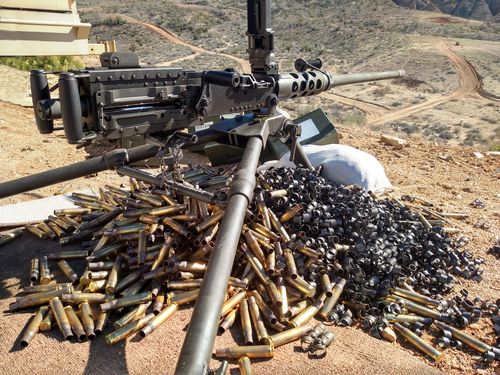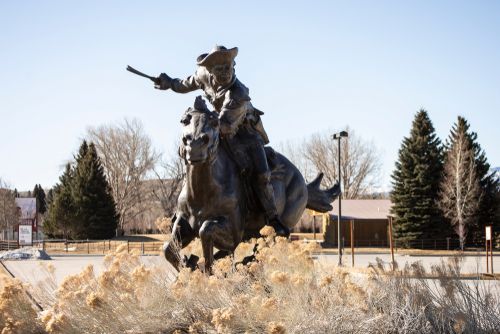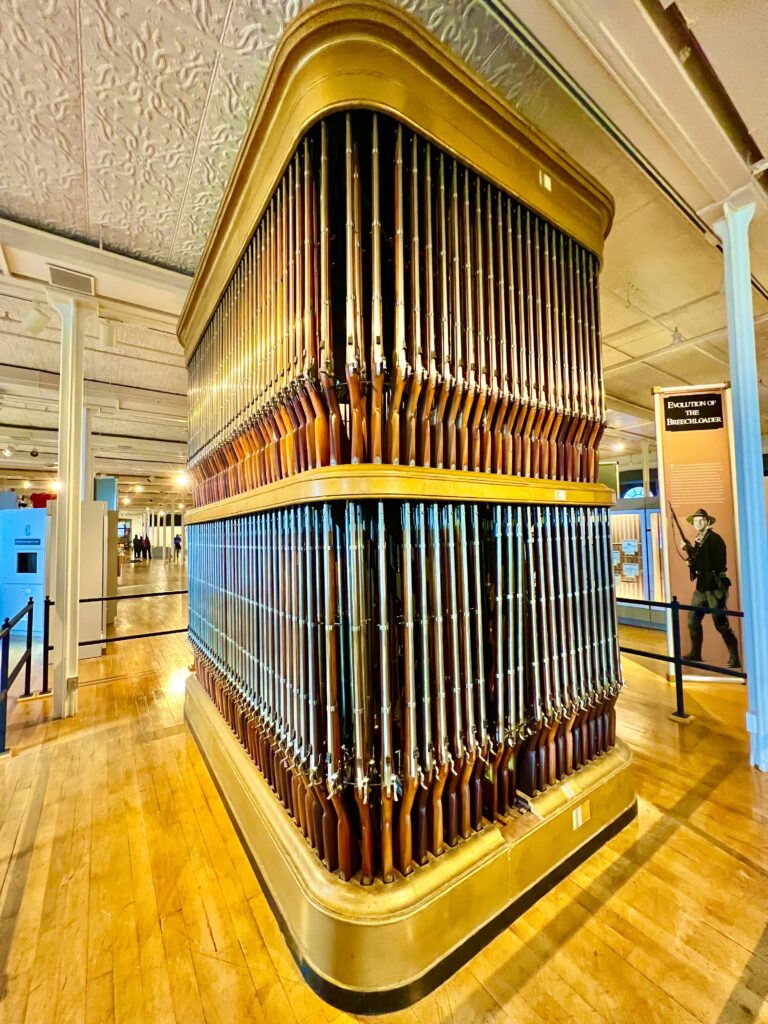
Echoes in Steel: Exploring America’s Legendary Armories
More than just repositories of weapons, armories across America stand as formidable monuments to innovation, conflict, and the very forging of national identity. From the roar of industrial machinery that once shaped the tools of war to the quiet reverence of museums preserving the implements of history, these sites tell a multifaceted story of American ingenuity, resilience, and the often-turbulent path of its past. They are places where steel met spirit, where design met necessity, and where the course of a nation was often profoundly influenced by the arms it produced and protected.
To truly understand America’s journey, one must walk the hallowed grounds of its legendary armories, each echoing with tales of revolution, civil strife, and the relentless march of technological progress.
Springfield Armory: The Crucible of American Ingenuity

Perhaps no armory is as emblematic of American industrial and military prowess as the Springfield Armory in Springfield, Massachusetts. Established by George Washington in 1794, this site was not merely a storage facility; it was the epicenter of American firearms manufacturing for nearly two centuries. It was here that the nation’s foundational principles of mass production and interchangeable parts were perfected, profoundly influencing not only military hardware but also the broader industrial revolution.
For generations, the name "Springfield" became synonymous with quality and reliability. The Springfield M1903 rifle, a bolt-action marvel, served American forces through two World Wars and countless smaller conflicts. Its successor, the M1 Garand, designed by John C. Garand who worked at Springfield, was famously dubbed "the greatest battle implement ever devised" by General George S. Patton. This semi-automatic rifle revolutionized infantry combat and played a crucial role in Allied victories in World War II.
"Springfield Armory was the beating heart of American military innovation," notes Dr. Sarah Jensen, a military historian. "It wasn’t just about producing weapons; it was about perfecting the process, making arms accessible and standardized, which was vital for a growing nation with a citizen army."
Today, the Springfield Armory is preserved as a National Historic Site, its vast collection of historic firearms, ranging from muskets of the Revolutionary War to experimental prototypes, housed in the original 19th-century arsenal building. Visitors can wander through the preserved grounds, envisioning the bustling workshops and the dedicated artisans who once toiled there, each hammer blow and lathe turn contributing to America’s defense. The sheer scale and diversity of its collection offer an unparalleled glimpse into the evolution of firearms technology and the nation’s military heritage.
Harpers Ferry: A Spark in the Powder Keg
In stark contrast to Springfield’s continuous industrial output, the Harpers Ferry Armory in West Virginia tells a different, more volatile story. Established in 1799, it was one of only two federal armories in the early 19th century, strategically located at the confluence of the Potomac and Shenandoah Rivers. While it produced thousands of rifles and muskets, its enduring fame, or infamy, stems from a single, pivotal event: John Brown’s Raid in October 1859.
Brown, a fervent abolitionist, believed that an armed insurrection was the only way to end slavery. His audacious plan was to seize the armory’s vast arsenal, arm enslaved people, and ignite a widespread rebellion. The raid ultimately failed, ending in Brown’s capture and subsequent execution. However, its impact was seismic, escalating tensions between North and South and serving as a direct precursor to the Civil War.
"Harpers Ferry was a flashpoint, a physical manifestation of the nation’s deepest divisions," explains Professor David Green, a specialist in antebellum American history. "The armory, designed to protect the nation, ironically became the site of an event that tore it further apart."

Today, Harpers Ferry is a National Historical Park, meticulously preserving the remnants of the armory and the town itself. Visitors can explore the engine house where Brown made his final stand, walk the historic streets, and contemplate the profound ideological conflicts that once gripped the nation. It’s a powerful reminder that armories are not just about the objects they contain, but about the human drama and historical currents they embody.
The Living Legacy: Military Academies and Their Collections
Beyond the industrial giants, America’s prestigious military academies serve as living armories, not only training future leaders but also meticulously preserving centuries of military history.
The United States Military Academy at West Point, New York, is perhaps the most prominent. Founded in 1802, its history is intertwined with virtually every major American conflict. The West Point Museum boasts one of the oldest and most comprehensive military collections in the Western Hemisphere. While not a manufacturing armory, it functions as a vast repository of arms, uniforms, flags, and artifacts from ancient times to the present, with a particular emphasis on American military history. From Revolutionary War cannons to captured enemy weapons, the museum provides cadets and the public with tangible links to the sacrifices and strategies of generations past.
"Our collection at West Point serves a dual purpose," says a museum curator. "It educates cadets about their heritage and the evolution of warfare, and it allows the public to connect with the incredible stories of courage and innovation that define our military."
Similarly, the Virginia Military Institute (VMI) in Lexington, Virginia, and The Citadel in Charleston, South Carolina, maintain impressive museums and collections that reflect their storied histories and the role of citizen-soldiers. VMI’s museum, for instance, prominently features artifacts from the Battle of New Market, where its cadets famously fought as a unit in the Civil War. These institutions, through their museums and the daily rituals of cadet life, ensure that the legacy of American arms and the warriors who wielded them remains vibrant and relevant.
Beyond the Battlefield: Specialized Collections and Public Access
While federal armories and military academies hold a unique place, several other institutions across America offer unparalleled insights into the world of firearms and their cultural impact.
The Cody Firearms Museum at the Buffalo Bill Center of the West in Cody, Wyoming, is arguably the world’s most comprehensive collection of American firearms. With over 7,000 firearms and more than 30,000 artifacts, it chronicles the development of firearms from their earliest forms to modern designs, with a strong focus on the American West. From the iconic Winchester lever-action rifles that "won the West" to Colt revolvers and Spencer carbines, the museum provides a crucial understanding of how firearms shaped frontier life, hunting, and defense. It showcases not just the mechanics, but the craftsmanship and cultural significance of these tools.
"The Cody Firearms Museum tells the story of America through its guns," states a museum spokesperson. "It’s about innovation, westward expansion, and the enduring human relationship with these powerful tools."
The NRA National Firearms Museum in Fairfax, Virginia, another significant institution, offers an extensive collection spanning over 3,000 firearms across 15 galleries. It meticulously traces firearms history from the 16th century to the present day, featuring everything from ornate European dueling pistols to modern sporting rifles and military weapons. The museum’s diverse exhibits, including "Hollywood Guns" and "Guns of the Presidents," highlight the multifaceted role of firearms in popular culture and political history, making it a vital resource for understanding their broad impact.
The Enduring Legacy
From the grand federal armories that once churned out the instruments of war to the meticulously curated museums that now preserve them, America’s armories are much more than mere buildings or collections of weaponry. They are dynamic historical sites that encapsulate the nation’s journey through conflict, innovation, and social change.
These armories stand as testaments to the human drive to create, to protect, and sometimes, to destroy. They tell stories of the industrial might that fueled a young nation, the fierce debates over freedom and slavery, and the personal courage of those who served. In their preserved walls and polished displays, we find not just echoes in steel, but the very heartbeat of American history—a powerful, complex, and enduring narrative that continues to shape the nation’s identity. Preserving these sites is not just about safeguarding artifacts; it’s about understanding ourselves and the path we’ve traveled.


